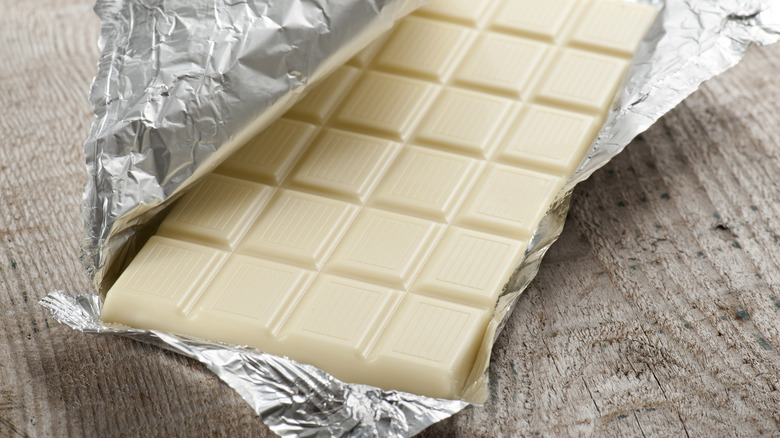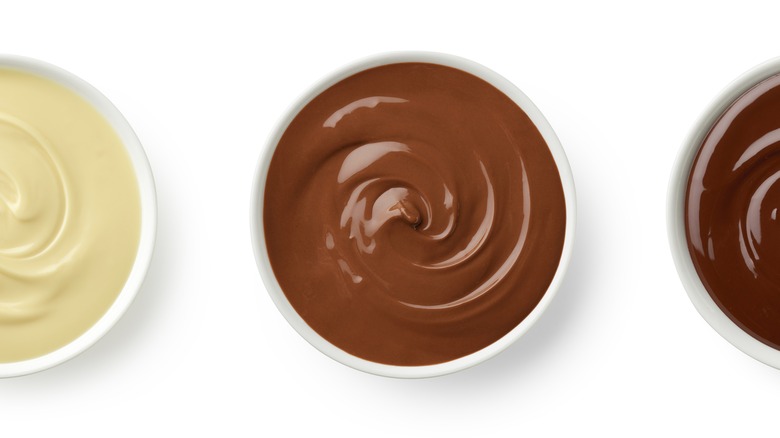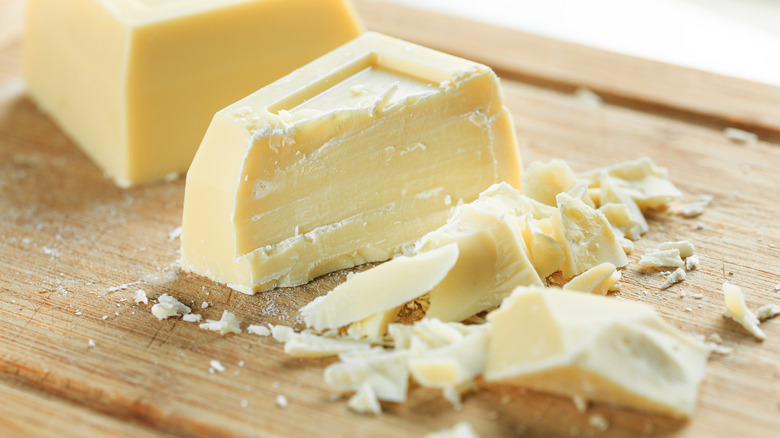Is White Chocolate Actually Chocolate?
Every chocolate lover knows the world's longest argument isn't over what came first, the chicken or the egg —it's if white chocolate is actually chocolate. If you've been following this for a while, the answer might surprise you. But first, some backstory. White chocolate was introduced commercially by Nestle in 1936 Switzerland. According to author Eagranie Yuh, as told to The Washington Post, "The story is that it was a way to use up excess milk powder that had been produced for World War I and was no longer in demand."
Just like its milk, semisweet, and dark counterparts, white chocolate starts as cacao beans that are processed then separated into cocoa butter and cacao nibs. That's where white chocolate carves its own path. It contains cocoa butter, milk, and sugar, but none of the nibs that give other chocolates their brown hues. Thus comes the question: without cacao nibs, is white chocolate even really chocolate?
No nibs, no chocolate
Those who say white chocolate, though delicious, isn't really chocolate, point to its lack of cacao nibs. Some dark (and milk) chocolate lovers claim that while cocoa butter provides creamy texture, the real aroma and trademark chocolate taste lies in the nibs, rendering white chocolate "candy" but not "chocolate." Additionally, since cocoa butter can be quite expensive, some companies use fillers like oil to hide the flavor of lesser-quality cocoa butter in their "white chocolate" confections. Without being at least 20% cocoa butter, white chocolate can't even be called white chocolate in the U.S. and other countries, so (according to Dame Cacao) some companies like Hershey's avoid even calling their white chocolate-flavored candy "chocolate" on the wrapper.
When it comes to those treats, there's little debate, and those on both sides of the white chocolate aisle agree that if it doesn't have enough cocoa butter, it isn't really chocolate. However, that 20% cocoa butter rule doesn't just keep some candy out of the club — it lets others in.
White chocolate earns its spot
The letter of the law is the deciding voice in this matter. Countries have different restrictions about what may and may not be called white chocolate, and whatever personal feelings may be held about these rules, the restrictions remain lawful and must be adhered to. The FDA dictates that white chocolate must contain at least 20% cocoa butter, at least 3.5% milk fat, at least 14% total milk solids, and cannot exceed more than 55% nutritive carbohydrate sweetener. That doesn't include fillers and oils.
So, is white chocolate legally chocolate if it meets these requirements? In America, it sure is (different countries have their own legally binding rules). After all, the word chocolate is right in the name. So make those blondies with abandon. Gently coax the flavor out of every pot de creme. And sing it from the mountaintops: white chocolate has rightly earned its name.


